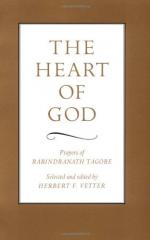|
This section contains 4,199 words (approx. 14 pages at 300 words per page) |

|
SOURCE: “Myths of Poesis, Hermeneusis, and Psychogenesis: Hoffmann, Tagore, and Gilman,” in Studies in Short Fiction, Vol. 34, No. 2, Spring, 1997, p. 227.
In the following essay, Smith discusses the archetypal, mythical elements of the maze, the goddess, and descent into the underworld in Tagore's “The Hungry Stones,” as well as in stories by E. T. A. Hoffmann and Charlotte Perkins Gilman.
The myths of the maze, the goddess, and the descent to the underworld play a key role in the “Mines of Falun” by E. T. A. Hoffmann, “The Hungry Stones” by Rabindranath Tagore, and “The Yellow Wallpaper,” by Charlotte Perkins Gilman. All three works present images of women imprisoned within a labyrinthine underworld that represents the threat of madness; and in each case the myths become metaphors for poesis, hermeneusis, and psychogenesis. While the three myths are archetypes frequently found in world literature, it is rather rare to find...
|
This section contains 4,199 words (approx. 14 pages at 300 words per page) |

|


